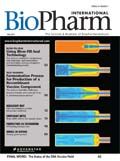The Status of the DNA Vaccine Field
Plasmid DNA-encoding proteins offer many advantages, which are now being used in clinical trials.
The concept of using plasmid DNA encoding proteins as vaccines evolved largely from the results of experiments completed in the late 1980s and early 1990s in which DNA uptake and gene expression by cells in regenerating muscle tissues of rodents was demonstrated. The unique attribute of these observations was that the DNA was delivered without materials commonly used to mediate cellular transfection; a formulation referred to as "naked DNA." The in vivo translated proteins proved to be immunogenic, and the generation of protective immune responses was soon demonstrated using several animal model systems.

Mark J. Newman, PhD
The potential advantages of this vaccine format are numerous. They include, first, the intracellular translation of proteins that can effectively deliver them to the processing pathways that generate the fragments needed to induce cellular immune responses, specifically T-cell responses; second, the ease of DNA plasmid manufacture using E. coli and column chromatography purification methods; third, DNA plasmid stability; and finally, lack of pre-existing immunity in vaccine recipients which might limit DNA uptake. Thus, a significant amount of excitement was generated for this vaccine format in the field.
Concerns with the possibility that vaccine DNA could become integrated into the recipient's genome, and potentially cause cancer, were allayed through a series of experiments completed in the mid-to-late 1990s, thus clearing the path for clinical testing. The levels of vaccine potency observed in research animals using naked DNA has not translated to humans and this has resulted in the use of large (1–5 mg) doses. However, the use of naked DNA as the "priming" vaccine in heterologous immunization regimens that include subsequent administration of viral vectored vaccines or proteins as the "booster" vaccines remains promising.
Although the use of the naked DNA approach is highly attractive because of formulation simplicity, the development of products to augment DNA vaccine potency has also been an active area within the field. Vaccine design approaches include the co-delivery of genes encoding cytokines, such as Granulocyte-Macrophage Colony Stimulating Factor (GM-CSF) and Interleukin-2 (IL-2), IL-12, or IL-15, which act directly on cells involved in generating or effecting immune responses and thus function as vaccine adjuvants. A search of the http://ClinicalTrials.gov website, which is managed in part by the US National Institutes of Health, indicates active clinical testing of numerous experimental products designed to induce immune responses to infectious pathogens and tumors. Thus, we can expect to better understand the safety and adjuvant activity of DNA plasmid-encoded cytokines within the next few years.
The use of cell-surface active polymers and cationic lipid-based materials to augment transfection efficiency into cells has also received significant attention and several DNA vaccine products have been tested clinically. Two of the more advanced transfection-enhancing materials are being developed by Vical in San Diego, and include a cationic lipid, designated Vaxfectin, and a synthetic poloxamer, designated CRL1005. Vaxfectin is used in DNA vaccine formulations designed to protect against avian influenza virus and anthrax while the poloxamer-supplemented formulation is used in a vaccine designed to protect or treat cytomegalovirus infections in organ transplant patients. Phase I or II clinical testing of these products have been completed and yielded promising results in terms of safety and immunogenicity. Another promising approach for DNA vaccine delivery involves the use of devices to increase plasmid uptake or to preferentially target either the skin or muscle cells. Three distinct approaches are under development currently: the gene gun, a technology owned by Pfizer that delivers DNA vaccine adsorbed to microscopic gold particles to the skin; needle-free injection devices by Bioject Inc. that can deliver liquid-formulated vaccines to either the skin or muscle using gas pressure; and in vivo electroporation devices being developed primarily by Inovio Pharmaceuticals and Ichor Medical Devices that can deliver liquid-formulated vaccines to either the skin or muscle.
Devices of these types are being evaluated in clinical trials currently with DNA vaccines based on virus proteins and tumor antigens. Of interest is that the devices can be used with simple DNA vaccine formulations or in combination with cytokine-supplemented vaccines and transfection-enhancing materials.
The clinical-trial data being generated now will continue to direct the evolution of the field. The future for DNA vaccine technologies, therefore, appears to be quite bright.
Mark J. Newman, PhD, is vice-president of Research and Development at GeoVax, Inc, mnewman@geovax.com.

Thermo Fisher Opens Advanced Therapies Collaboration Center in California
April 18th 2025The 6000-square-foot facility will provide cell therapy developers the support they need to transition to CGMP manufacturing, and an expanded footprint of the new center is expected to open in Philadelphia later in 2025.